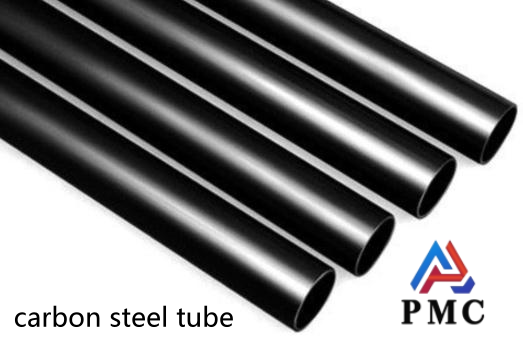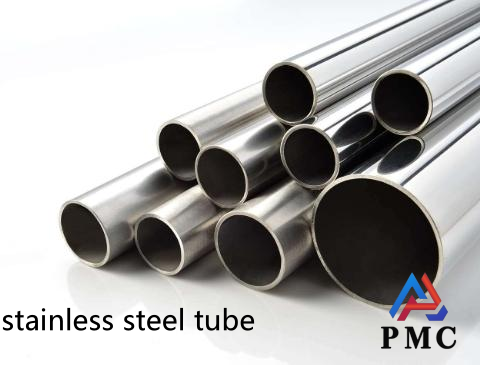
Carbon Steel Tube vs Stainless Steel Tube in Corrosion Resistance
Composition differences lay the foundation for corrosion resistance
Carbon steel tubes are mainly made of iron and generally contain carbon between 0.0218% and 2.11%. Iron is a relatively active metal that easily undergoes oxidation reaction with oxygen in humid air to form rust. When the carbon content in the carbon steel tube increases, in non-oxidizing acid, the increase in carbon content in the steel increases the amount of cementite, which will form more micro batteries with the matrix, thereby accelerating corrosion.
The main components of stainless steel tubes, in addition to iron and carbon, also contain a certain amount of chromium (Cr). Generally, the chromium content must reach at least 11%. Some also add alloy elements such as nickel (Ni) and molybdenum (Mo). Chromium is the key to improving the corrosion resistance of stainless steel. When the surface of stainless steel comes into contact with oxygen, chromium will react with oxygen to form a dense chromium oxide protective film on the surface of the steel pipe.
This film is very stable and can effectively prevent oxygen and water from contacting the internal iron matrix, thereby preventing corrosion. Nickel can increase the austenite content and further improve the corrosion resistance of steel; molybdenum can enhance the pitting and crevice corrosion resistance of stainless steel in special environments, such as chloride ion environments.

Corrosion resistance performance comparison
1. Under natural environment
In the atmospheric environment, carbon steel tubes can easily react with oxygen and water vapor in the air, and rust will appear on the surface in a short period of time. As time goes by, the degree of rust continues to deepen, and the rust will gradually peel off, affecting the structural strength and appearance of the steel pipe. For example, a carbon steel water pipe exposed outdoors will be covered with rust after one or two years.
Stainless steel tubes have good stability in the atmosphere due to their dense chromium oxide protective film. They basically will not rust after long-term use and can always maintain a bright metallic color. Like the stainless steel sculptures in the city, they remain intact after years of wind and sun.
In a water environment, if a carbon steel tube transports ordinary tap water, the oxygen dissolved in the water and trace amounts of acid and alkali substances will slowly corrode the inner wall of the steel pipe. Over time, this will cause the pipe wall to become thinner and leaks to occur. Stainless steel tubes are highly resistant to water corrosion. Whether it is ordinary tap water or slightly corrosive industrial circulating water, they can operate stably for a long time and will not be easily corroded. For example, the water supply systems of some high-end buildings use stainless steel pipes, which can ensure long-term and stable water supply.
2. Under special circumstances
In acid and alkali environments, the corrosion resistance of carbon steel tubes is extremely poor. Stainless steel tubes have better tolerance to acid and alkali solutions of general concentrations. Like 304 stainless steel tubes, they can remain stable in a certain concentration of nitric acid solution; however, some stainless steel tubes will also corrode for some strong oxidizing acids or high concentrations of acids and alkalis, but compared with carbon steel tubes, their ability to resist acid and alkali corrosion is much stronger.
In a chemical environment, when carbon steel tubes come into contact with chemical substances containing corrosive media such as chloride ions and sulfur ions, severe corrosion will occur.
For example, in the marine environment, a large amount of chloride ions in seawater will accelerate the corrosion of carbon steel, greatly shortening the life of carbon steel equipment. However, 316L stainless steel tubes with added molybdenum have strong resistance to chloride ions and are often used in marine engineering and chemical equipment to effectively resist the erosion of chemical substances.

Factors affecting corrosion resistance
stainless steel tube
1. The corrosion resistance of stainless steel tubes is affected by many factors. The content of alloy elements is the key. The higher the chromium content, the more stable the chromium oxide protective film formed and the stronger the corrosion resistance.
2. Surface condition is also very important. A smooth, flawless surface can reduce the adhesion of corrosive media and reduce the risk of corrosion. For example, polished stainless steel tubes have better corrosion resistance than pipes with ordinary surfaces.
3. Environmental factors cannot be ignored either. In an environment with high humidity, high pH and a large amount of chloride ions, the corrosion rate of stainless steel tubes will accelerate. For example, in a marine environment, ordinary stainless steel tubes may experience pitting corrosion, while high-molybdenum stainless steel tubes can better resist corrosion.
carbon steel tube
1. For carbon steel tubes, the thickness of the galvanized layer is an important factor affecting its corrosion resistance. The thicker the galvanized layer, the stronger the protection of the internal iron matrix.
2. The galvanizing process also has an impact. The galvanized layer formed by the hot-dip galvanizing process has a tight structure and strong adhesion, and has a better anti-corrosion effect than cold-dip galvanizing.
3. Surface treatment is also critical. Thoroughly cleaning and derusting the carbon steel surface before galvanizing can better bond the galvanized layer to the substrate and enhance corrosion resistance. If the surface treatment is improper, the galvanized layer will easily fall off, causing the steel pipe to corrode quickly.
Conclusion
There is a significant difference in corrosion resistance between carbon steel tube and stainless steel tube. When choosing pipes, carbon steel tubes are a more economical choice if the corrosion resistance requirements are not high, cost control is strict, the use environment is relatively dry, and there is no risk of chemical corrosion, such as non-critical structural supports in ordinary buildings, simple pipelines in dry indoor environments, etc.
If the application scenario has extremely high requirements for corrosion resistance, such as chemical production, marine engineering, food and pharmaceutical industries, stainless steel tubes are the best choice. They can ensure long-term and stable operation of pipelines, reduce maintenance and replacement costs, and ensure production safety and product quality.
Read more: Does Seamless Carbon Steel Pipes Need to be Anti-corrosion?


